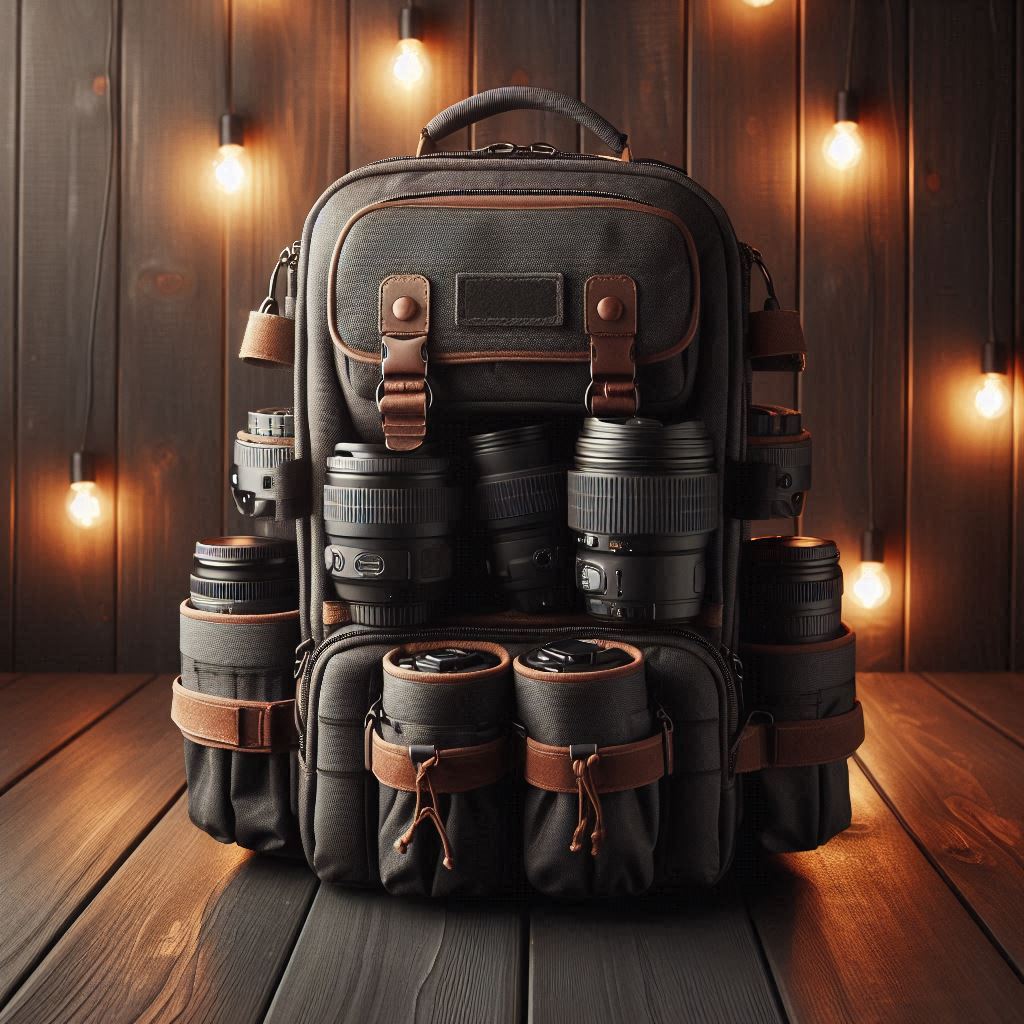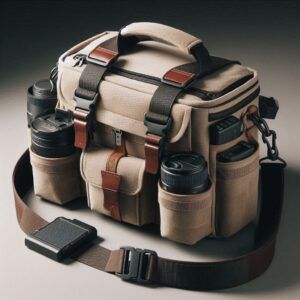There is a common challenge that many of us face as photographers. That challenge is finding the perfect camera bag that combines protection, convenience, and accessibility. There is no one-size-fits-all solution. it’s about identifying what YOU need. Whether you’re capturing the grandeur of landscapes or the intimate details of wildlife, the bag you choose is as vital as the camera itself.

Something To Consider
The choice of your camera bag can influence your shooting efficiency, comfort during long treks, and even the quality of the photos you capture. It’s essential to identify what type of photography you primarily pursue. Are you waiting hours for the perfect light in a remote location, or are you on the move tracking elusive wildlife? Each scenario demands different features from your bag.
When I look for a new camera bag, I prioritize size, compartmentalization, padding, and resistance to the elements. Additionally, I’ll never underestimate the value of choosing a bag that feels comfortable after hours of wear. After all, a sore shoulder or a cumbersome bag can cut a photography session short or cause you to miss that golden shot.
Landscape and Wildlife Photography Bags
If you’re serious about capturing the stunning vistas of landscape photography or the dynamic scenes of wildlife photography, you’ll soon realize that not just any camera bag will do. Choosing a bag that caters to the unique demands of these photography styles can make all the difference in snagging that perfect shot.
For landscape enthusiasts, a bag that comfortably fits a sturdy tripod is a must. Consider models with external straps or dedicated compartments. You’ll also need space for an array of lenses to capture sweeping panoramas and minute details alike. Seek out bags with customizable compartments that securely house different lens sizes and shapes.
Wildlife photography, on the other hand, demands quick access. Look for camera bags with silent-closure compartments that allow you to retrieve your equipment without scaring off your subject. These bags should have robust padding to protect gear during those off-the-beaten-path treks.
Durability is non-negotiable for photographers who immerse themselves in nature. Materials that withstand harsh conditions, from torrential rains to scorching sun, are worth their weight in gold. Bonus points for weather-sealed zippers and water-resistant or waterproof fabrics that safeguard your prized cameras and lenses.
Price Tag vs. Performance
When it comes to camera bags, one size does not fit all – financially speaking. The market ranges from budget-friendly choices to premium professional gear. Your budget plays a crucial role, but it’s not just about the initial cost. It’s about finding a balance between affordability and functionality. What’s the real difference between a cheap camera bag and its pricier counterparts?
At first glance, budget and high-end camera bags may seem to fulfill the same basic purpose. However, the devil is in the details. Cheaper bags might offer basic protection and compartmentalization, while more expensive models often boast higher-quality materials that stand up better to wear and tear, additional features such as built-in rain covers, and ergonomic designs that improve comfort.
Let’s address a common question. Does it make financial sense to invest in an expensive camera bag? Consider this, premium bags tend to offer stronger protection with better padding, customizable compartments, and robust water and shock resistance. If your gear is high-end, it warrants the extra protection that comes with a heftier price tag. More than just functionality, a premium bag often lasts longer, meaning you save money over time.
For those on a tighter budget, there’s GOOD NEWS. Quality doesn’t always equate to a high price. Some affordable camera bags are engineered with impressive features that meet the mark. Look for brands that strike a balance between cost and quality, offering sturdy zippers, reliable stitching, and adequate protection.
In the premium space, you’ll find camera bags with specialized compartments, built-in USB ports, and even solar panels for charging your equipment on the go. These bags cater to professional photographers who need extra assurance for their gear in challenging environments.
The Ins and Outs of Buying Used Camera Bags
Photographers often operate on a budget, and one way to save money without sacrificing quality is by purchasing preowned camera bags. Not only does this choice support sustainability by giving bags a second life, but it can also be kind to your wallet.
When shopping for a used camera bag, the condition is critical. Check for signs of extensive wear, such as fraying seams, broken zippers, or missing buckles. A worn-out bag might not protect your gear effectively, potentially costing you more in the long run.
Assess the padding within the bag. Over time, padding can compress and lose its shock-absorbing properties. Make sure the bag’s interior can still snugly and securely fit your camera and lenses.
Has the previous owner made modifications? Sometimes, photographers will personalize bags with additional padding or compartments. Be sure these changes meet your specific needs and standards.
Your best bet for finding a quality used bag is through reputable online marketplaces, trusted photography forums, or local camera shops. Look for sellers with high ratings or shops that offer some warranty or return policy.
Once you have found a potential bag, ask about its history. Understanding the extent of its use can inform you about its longevity and any maintenance you might need to perform. It’s important to feel confident that the bag will hold up under your camera gear demands.


Backpack Vs. Hand Carry
Making the final call between a backpack and a hand-carry camera bag boils down to understanding your habits and needs as a photographer. I recommend considering the type of equipment you carry, the environments you typically work in, and how much gear accessibility matters to you at the moment.
Backpacks are a staple for photographers who trek to remote locations or who simply need to keep their hands free while on the move. The ergonomic benefits can’t be overstated, especially when you’re carrying heavy lenses and multiple camera bodies for hours on end.
On the flip side, hand-carry bags might be your ally for less strenuous assignments or when quick, unencumbered access to your camera is paramount. Events like weddings or photojournalistic tasks where every second counts might call for the simplicity a hand-carry bag provides.
Final Thoughts
In any choice you make, remember to PAY ATTENTION TO THE QUALITY OF THE PRODUCT. Whether it’s a backpack or a hand carry, your camera bag is a crucial investment that protects your most vital tools.
I view the decision as more than just a functional one. it’s about how you like to experience your photography. Try out different styles—if possible, rent or borrow a few types to see which aligns best with your workflow. Your perfect camera bag isn’t just about storage; it’s a personal choice that accentuates your style, eases your efforts, and safeguards your passion.

